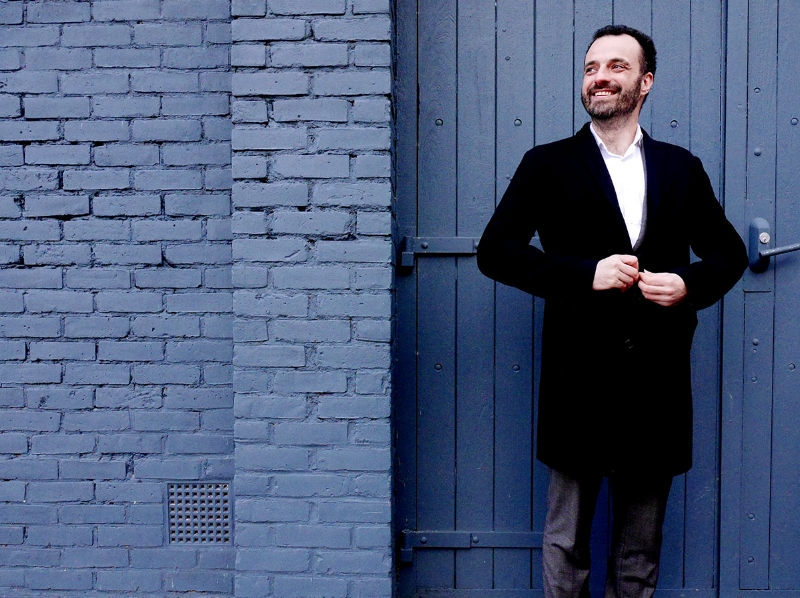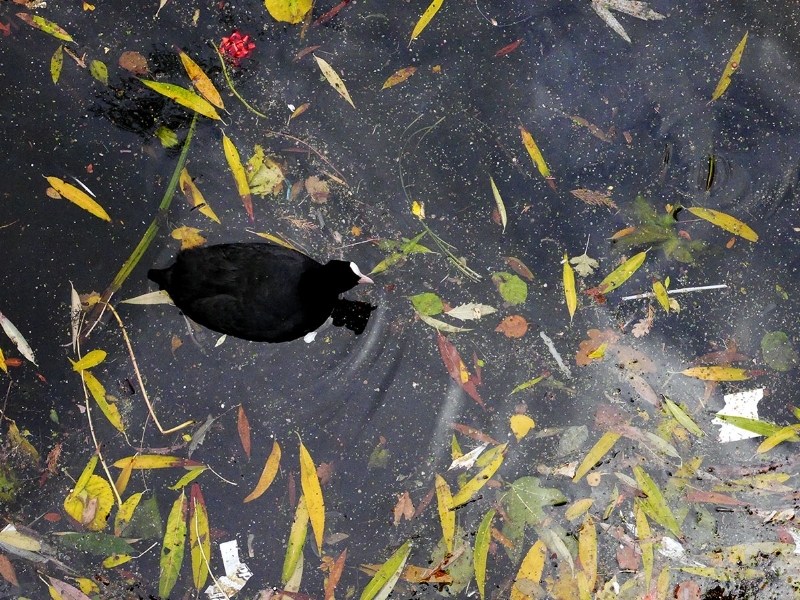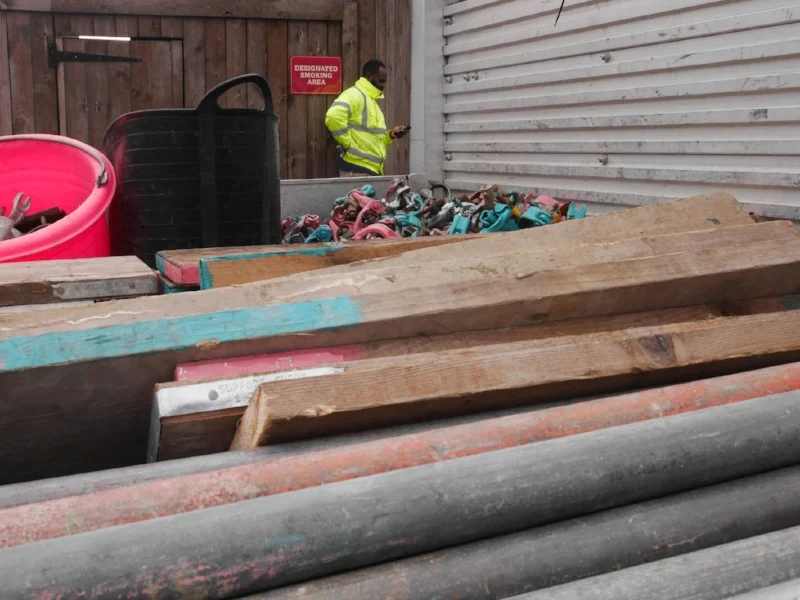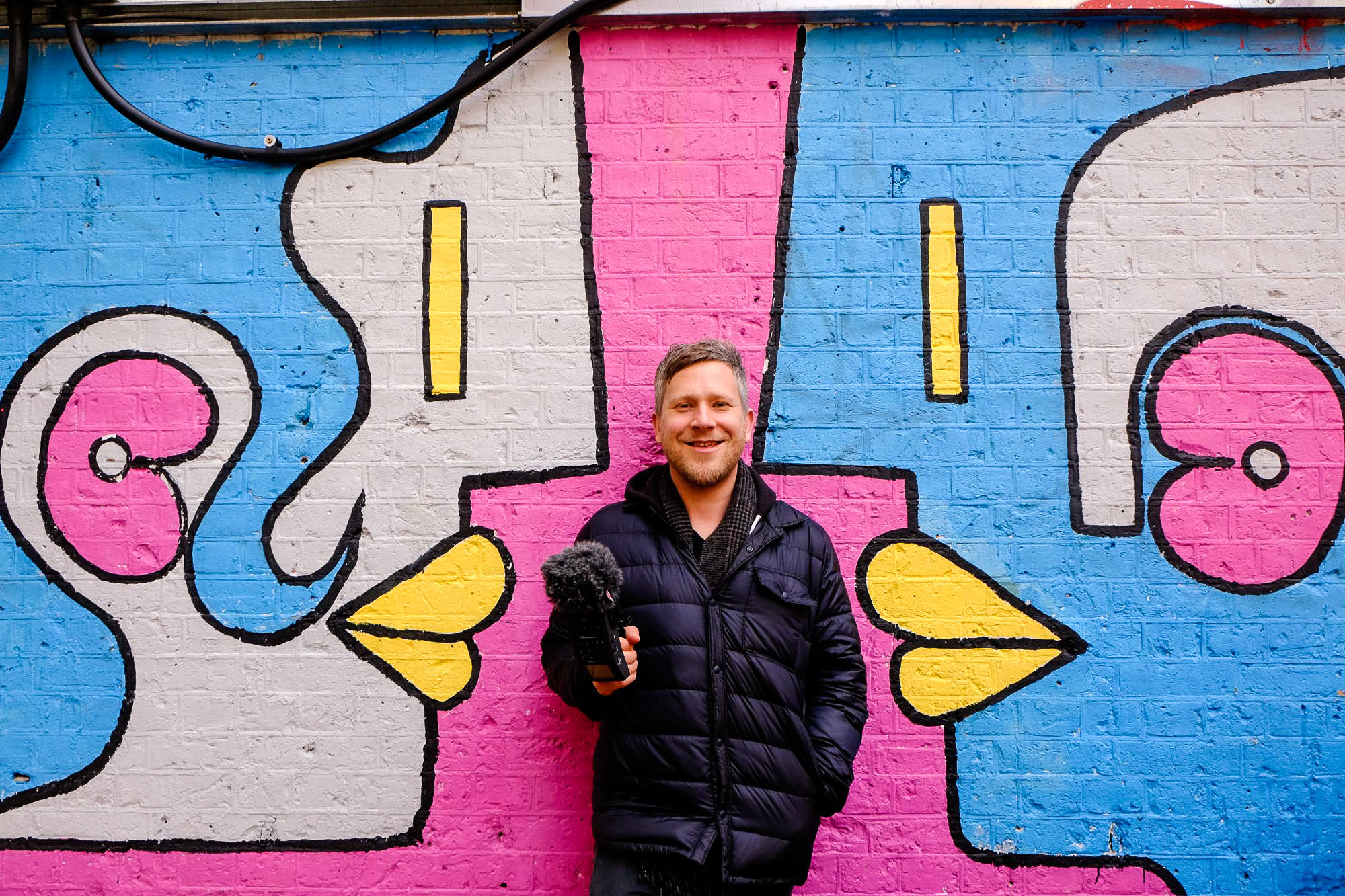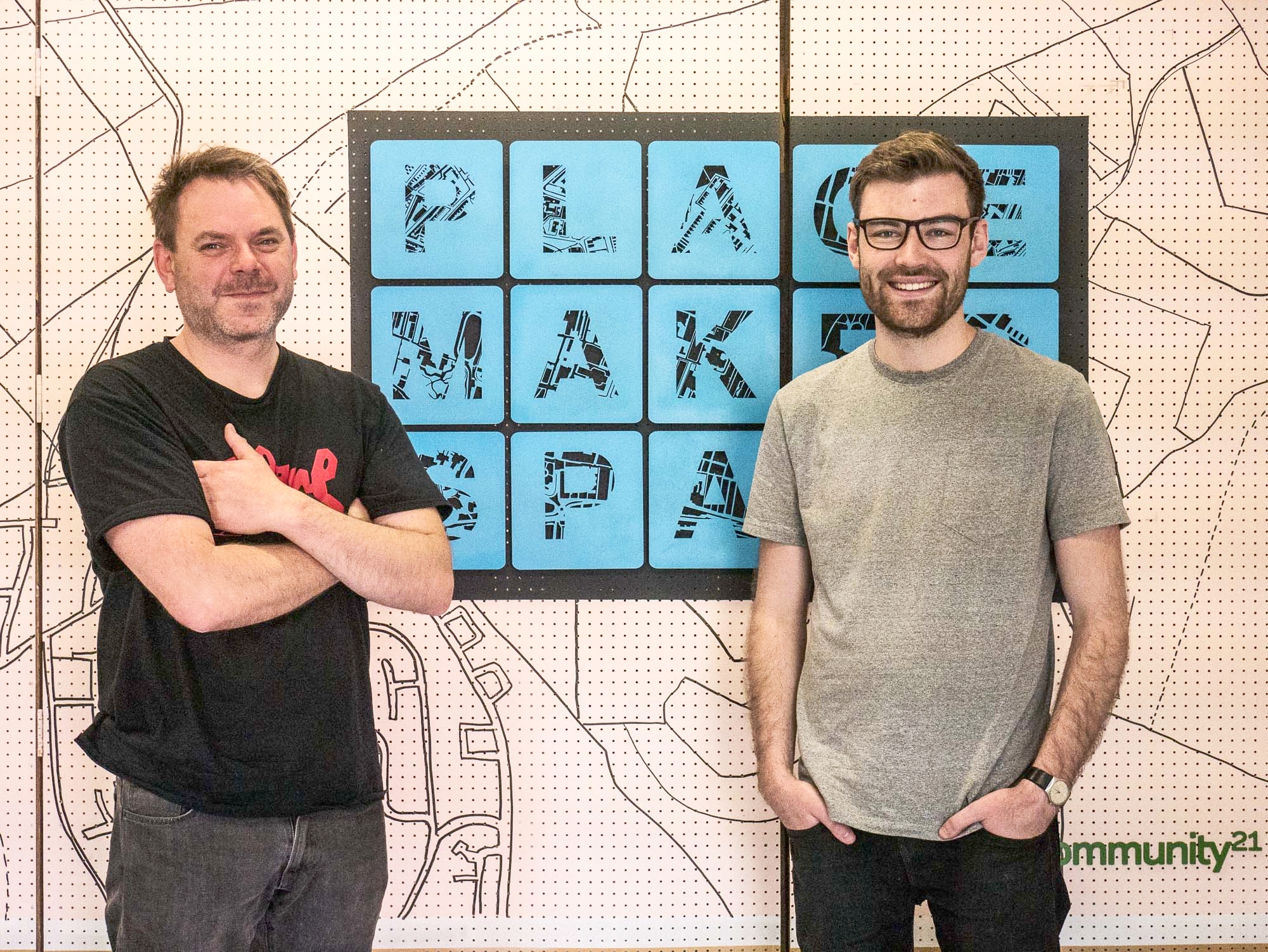'Whether we like it or not, data is our digital DNA.'
Spatial strategist Iñaki Arbelaiz reveals the human side of data in regenerating our cities
6 minute read
If the life of a city is like music, Iñaki Arbelaiz might be its conductor. Raised in the Basque country, he studied cello at San Sebastian’s prestigious music conservatory alongside training as an architect and urban planner. He now leads KUDA Studio, specialising in planning, innovation and design strategy to shape evolving urban environments and regenerate failing ones. Based in Barcelona, he works internationally to pioneer his data-driven approach to re-imagining cities. To hear his take on how data plays into narrative, we took a walk with Iñaki around London’s Kings Cross, where a choreography of trains, cranes and people flow at every turn. For Iñaki, this ever-evolving area offers untapped opportunities that only data can reveal.
Iñaki, tell us about your musical background – how has it influenced your urban practice?
Music allows you to understand complexity swiftly because you comprehend complex environments – an orchestra, for instance. You understand the complexities of group dynamics, and how to be a part of something but act as an individual as well. It’s like learning how to pedal a bicycle. If you break the task down, it’s gigantic. But at some point it comes intuitively.
That's an interesting analogy for placemaking. How have you developed your work at KUDA Studio with this idea of intuitive complexity?
As far as I know, we are the first planning firm using data from a built environment point of view. Through analysing data, we realised that people are in a sense lying to us! It sounds brutal, but everybody lies in the sense that we say we wish to have something, and then we do something completely different. Time and again, our studio is brought in to fix what we call the ‘Amélie city’ or the ‘hipster city’, where everything is stylised: cupcakes and coffee shops. But those plans have never worked. Our discussion is about why those plans are not working.
This is where data comes in: because for us data is a tool to understand the spaces of opportunity within a city. It's not about building the city from regret or angst.
—
Data is a positive reaction: taking everything as it is. Problems are neutral. They are opportunities, not illnesses.
—
People tell us they want more museums and coffee shops; what data shows us is that those same people spend their weekends at a shopping mall. People say, “we need more social housing.” But there are already a lot of empty houses around. You don't need to build more houses per se. If you do, what we'll have is a ‘dorm city’, where everybody sleeps there, and there isn't enough job creation to have people working there.
We‘re currently working with the City Hall in Barcelona, and data is showing us that there is not enough economic activity in the city. We’ve found that when creating a spatial narrative, people usually do not take economic activity into account.
What do you mean by smart city in this context?
A smart city for us is a city that uses data in order to allow itself to evolve. It knows that it is an open, narrative place. Our projects never stop. Whenever we deliver a project, it's always as a framework for 5, 10, 20 or 30 years, never a physical reality.
Very often narrative plays to the heartstrings, and what you're doing is using narrative to play to a rational approach. How do you work with narrative to support the data or vice versa?
We create a tale. We’ve got different characters, different settings, a different plot. What data allows us to understand is how you can create those scenarios based on reality. For instance, in Barcelona, data is showing us that drug addiction is an incredibly high activity. That is part of the reality, the scenario we are working with. The narrative allows us to extract potential out of it. We created four different characters to understand how we could create a value proposition – not economic value but human value, interaction value, activity value.
In Barcelona we have what are called ‘injection rooms’, where the municipality gives drug addicts a sanitised needle to prevent infections, as well as psychological support. We started to look at how existing business could make that city service more efficient. We make a user-centric scenario so they can start testing new ways of helping those people out.
So do you think about cities or places as having these different users?
Yes, but we have to be very aware that these are just tools for us, because the problem with a persona-based design is that you are creating something for somebody who doesn't exist.
We often talk about the ‘gallerina’ as a persona. She is the perfect professional woman, with a well-paid corporate creative job, happy healthy family and still with time to go to a gallery opening in the evening with friends. If we follow that persona, we will fill up the city with art galleries. It’s a nice way to picture a street but not the best tool to revitalise an area. Our goal is to have the area kicking ass, not have a good render of nice people. Our goal is to create models where the city can get pumped up, fueled up, and allow things to happen.
Do you find that you have to at some point bring your approach back together with the ‘Amelie city’ approach?
No, because the results of our approach are sound. We back it up with figures rather than renders. That is the criteria of good content. If it makes sense, and if the numbers make sense, and if it's a proposition rather than reactionary, then there’s no need to stylise it.
Who do you typically work with? And who’s on your team?
Our clients are usually cities, neighborhoods and large developers. Our team includes two architects, an interaction designer and a business developer. The most interesting is the business developer: they've got staggering imagination and are able to turn the bad into good without having to be religious about it.
How do you connect your strategic thinking to what actually happens when the place is developed and changed on the ground?
One of the results of our work with data was understanding that public space is no longer about property, but about responsibility. There’s a big difference in that sometimes municipalities cannot act or take over a space. In the case of Beasin, with this gravity-centered model of city, what we have devised for them is a flexible model. It is a package that can be put on a lorry and travel from point to point. You can colonise another building. It allows the municipality to say, "okay, I need to act on this building and have it running for a year. After a year, I'm not longer responsible for this building.” So this package goes to another place that has to be reactivated.
Our responsibility as creative people and planners is to make cities for citizens. We have to be realistic about what the municipality can do and cannot do, otherwise the next government is going to have the legacy of an unsustainable model for 20 years. It's not ethical to for us to deliver that.
—
Because there is a change between property and responsibility, our narrative has to change into the idea that we are responsible for the content, not the envelope.
—
On this note, we head off for a walk with Iñaki around the new developments at London’s King’s Cross to explore what’s happening.
So if you were Mayor here for a day, Iñaki, what would you change?
The first thing we’d start with is the construction site. At the end of the day conceptually a construction site is just the setting up of a boundary. Our question is, why are you not using the construction site already? Why wait? Why don't you work with boundaries so that some services are shared?
For instance, you look at the urban data and there are no health services nearby. A construction site is a temporary building, but it’s ‘temporary’ for five years. You are losing the opportunity of giving back to the city the services that they need and providing services for the community. That is a valid proposition also for the National Health Service because they will cut costs immensely. You are closer than a big hospital for an emergency case. Five years is a relevant amount of time – you could have saved 20 lives.
So with data you're looking at a more fine-grained level about the use of the city.
In cities, changes happen when a new utility appears: public transportation, electricity, water service, sewage.
—
For us, data is a new utility, because it has been democratised to the point where we cannot live without it. Data is now a public concern.
—
Do you think that kind of thinking is going to filter down from planners to more ‘everyday’ people – the users of a city?
Yes, because you can show them that data is able to make their environment better. People don't like to change per se. We can help them understand that data can, for instance, make their vacant real estate much more dynamic.
It’s important to understand that using data doesn't mean you are going to have a high street on every street. Data also shows you the parts that don't have to be activated, which we call ‘urban buffers’. An activity point exists because there is a ‘non active’ point next to it. That is what makes the city a fine craft. Data analysis allows you to understand that there are tranquil points that have to remain tranquil.
Here, on the bridge over the canal, the buffer is not only the canal but also the wider parts of the tow path. What data shows are the patterns – that this kind of leisure space is very much used at certain points of the day.
Are those patterns changing? You tend to hear a lot about people’s patterns of work and leisure becoming more diverse and flexible.
Not much. We used to think that we would be working and shopping 24/7. But we still need free time. There is a connection with changes in our environment. If you were to map Hyde Park during the week and during the weekend, you would clearly see which are the tourist points, the leisure points and the everyday use points.
—
This kind of knowledge is important because our vision is to empower local greatness, to use data to empower what is already rooted there.
—
With drug addiction in Barcelona, it's a problem, but it's also part of the environment. Play it as an advantage.
If you look both ways from this bridge, the character of the two sides of the street is very different. We will never change these local ingredients or try to work against them.
It’s also important that if you start working with the community and having them understand the power to change things, you need to respect them. Data means respect for the citizens of a place. You can be creative but it's your interpretation of the existing environment. You are not imposing anything – you’re not emblazoning your vision with fire on the citizens' skin.
It makes data seem very human.
We always tend to forget that data is created by humans. It's a reflection of us whether we like it or not. It is like our digital DNA.
If you were to offer a piece of advice to someone working in placemaking, what would it be?
Put your shoes on and get away from the bloody screen! Take your client with you on a city walk. You will engage much more with them, gain new insights. We should encourage our citizens to actually start using the city more.
Learning from Iñaki's approach
GET REAL
Data allows us to contrast ideals and reality. Information enables us to take positive reactions to what we find, as problems become opportunities, not illnesses.
—
Using data as your opening line
Data can be the story's starting point: today’s version of ‘once upon a time’. With that first line in place, we can play out different scenarios and ‘what if's...?’ based on a grounded reality.
—
Creating content not envelopes
As the emphasis in public space shifts from property to responsibility, the role of content becomes ever important. But how do you programme the public realm? Using data to understand the context, audience and players we can adjust our content and story over time.
Want more? Iñaki recommends…
Mon Oncle, Jacques Tati: a film about the paths, pacing and the reflection of human behaviour on spaces.
Don Quixote: still the best narrative placemaking book. Read as the collision between the imaginary and the real world, it is a fantastic piece of spatial narrative and testament to the kaleidoscope of placemaking.
The article “Of time and fetishization of the built city,”
Kees Christianse and Peter Marcuse, Cities in transition

